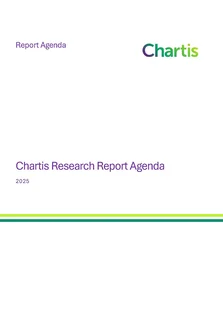<p>Operational risk management (ORM) is now an established discipline within the financial services industry. Many of the early doubts and uncertainties about the practical benefits and robustness of methodologies have faded away. Recent high profile losses coupled with increased shareholder/regulatory pressures have made it mandatory for financial institutions to implement systematic and continuous processes for collecting, analysing and reporting operational risks.</p>
<p>Chartis forecasts the worldwide ORM market to grow to $1.68bn by 2013 at a compound annual growth rate (CAGR) of 6.9%. This growth is fuelled by:</p>
<p>1. On-going replacement market, as first generation ORM systems have proven to be too rigid or not scalable</p>
<p>2. Ongoing demand from emerging markets of Asia, Africa and Latin America</p>
<p>3. Increased demand in specific vertical segments such as insurance, asset/fund management and broker/dealers</p>
<p>4. Convergence of oprisk, ERM and GRC</p>
<p>5. Increased focus on benefits of compliance</p>
<p>Increasingly firms are moving away from their fixation on "box-ticking" compliance and are working towards integrating ORM into everyday business activities. This has resulted in development of value-based ORM initiatives to justify the required budgets for comprehensive ORM and GRC systems. Typical business cases for investing in ORM include components such as loss reduction, capital savings, improvements in business planning and improvements in reputation/external communication.</p>
<p>On the supply side, the market is still fragmented and selecting an ORM system is highly dependent on the specific needs, sophistication and geographical location of the buyer. Successful ORM software vendors have continued to invest in R&D. Much of this investment has focused on increasing the flexibility and user-configurability of the products. Integration of components such as loss data, RCSA, KRIs, scenario analysis, capital calculation and reporting on a single technology platform has also consumed much of the product development efforts. A clear trend among the leading solutions is the integration/packaging of best-practice content (e.g. loss data, risk/control libraries, KRIs).</p>
<p>This report is an update to Chartis' 2008 report on operational risk management systems. It looks at both the demand and supply side of the market. It covers the main market and regulatory requirements and the competitive landscape. The report also includes updated forecasts of market size, competitive landscape (covering 18 ORM system vendors) and future outlook.</p>
<p>Vendors covered in detail include: Algorithmics, BWise, Optial, Chase Cooper and SAS.</p>
<p> </p>
<p> </p>
Only users who have a paid subscription or are part of a corporate subscription are able to print or copy content.
To access these options, along with all other subscription benefits, please contact info@risk.net or view our subscription options here: http://subscriptions.risk.net/subscribe
You are currently unable to print this content. Please contact info@chartis-research.com to find out more.
You are currently unable to copy this content. Please contact info@chartis-research.com to find out more.
Copyright Infopro Digital Limited. All rights reserved.
As outlined in our terms and conditions, https://www.infopro-digital.com/terms-and-conditions/subscriptions/ (point 2.4), printing is limited to a single copy.
If you would like to purchase additional rights please email info@chartis-research.com
Copyright Infopro Digital Limited. All rights reserved.
You may share this content using our article tools. As outlined in our terms and conditions, https://www.infopro-digital.com/terms-and-conditions/subscriptions/ (clause 2.4), an Authorised User may only make one copy of the materials for their own personal use. You must also comply with the restrictions in clause 2.5.
If you would like to purchase additional rights please email info@chartis-research.com


